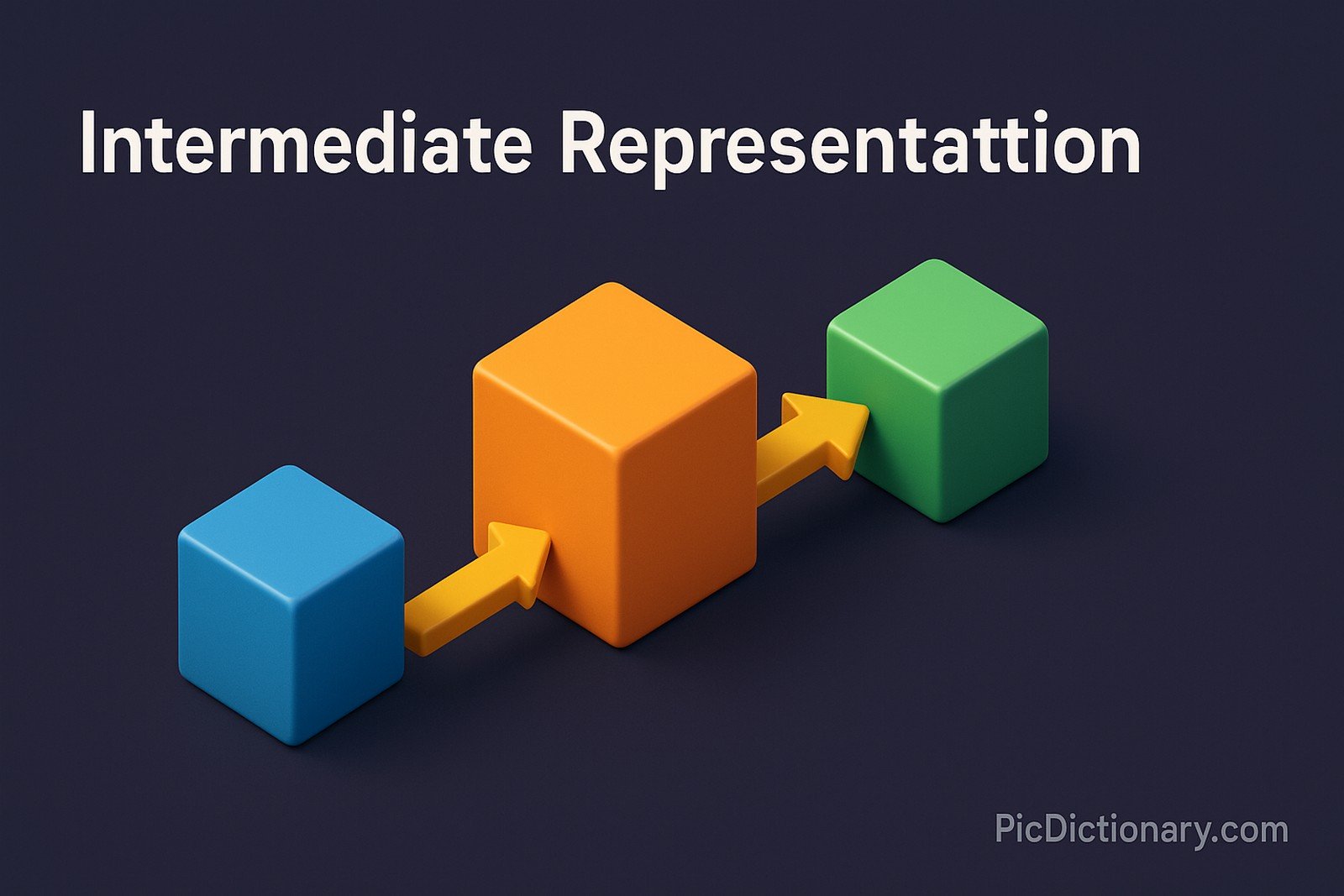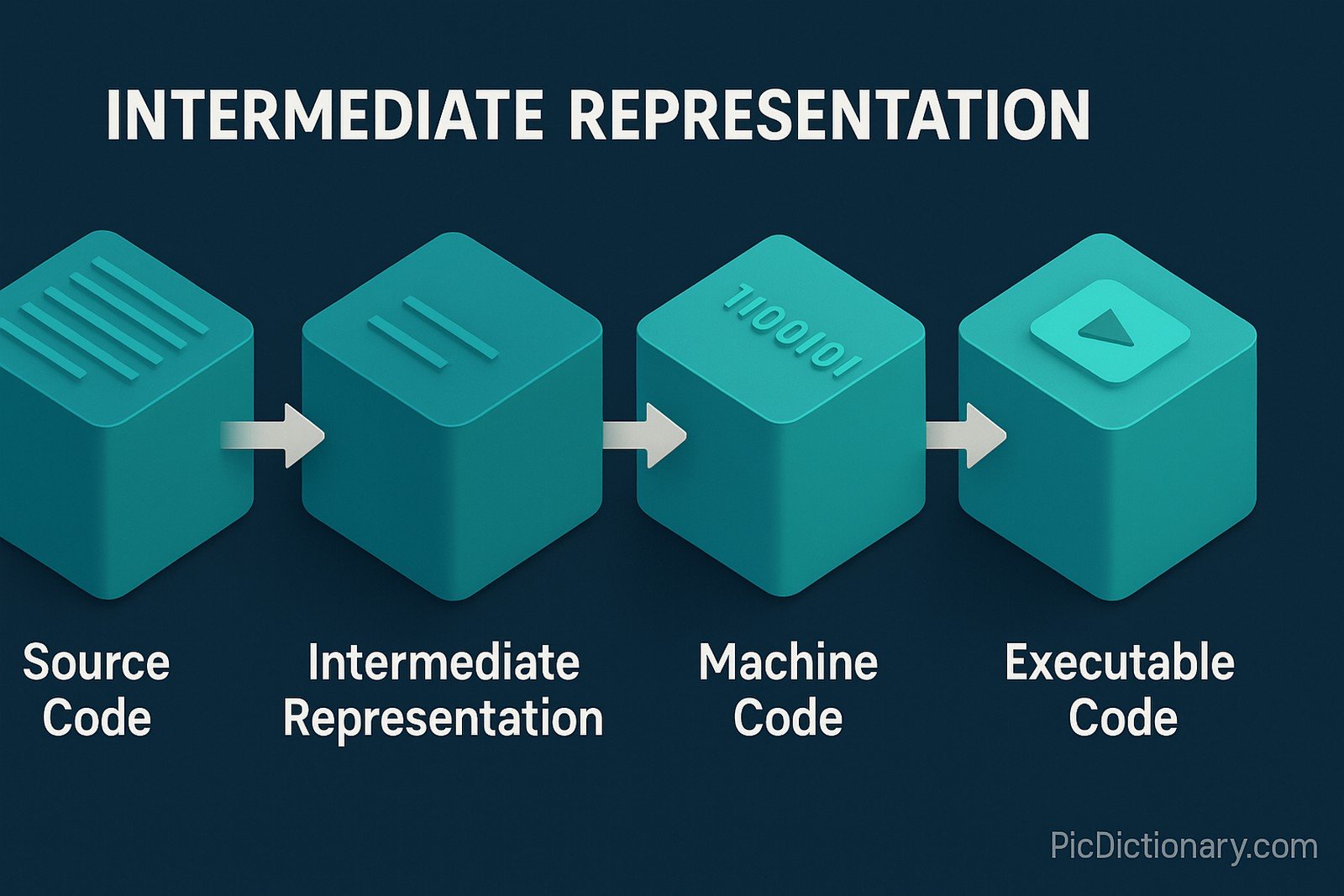Intermediate Representation

Quick Navigation:
- Intermediate Representation Definition
- Intermediate Representation Explained Easy
- Intermediate Representation Origin
- Intermediate Representation Etymology
- Intermediate Representation Usage Trends
- Intermediate Representation Usage
- Intermediate Representation Examples in Context
- Intermediate Representation FAQ
- Intermediate Representation Related Words
Intermediate Representation Definition
Intermediate Representation (IR) is a data structure or code used in compilers and interpreters to serve as a bridge between the high-level source code and machine code. It is an abstraction that allows for optimizations and transformations before generating executable code. IR can take various forms, such as abstract syntax trees (ASTs), control flow graphs (CFGs), or three-address code (TAC). The purpose of IR is to make compiler design modular, enabling efficient code analysis and optimization while maintaining machine independence.
Intermediate Representation Explained Easy
Think of IR like a rough draft of a story before turning it into a final book. When you write a book, you first create an outline to organize ideas before finalizing sentences and paragraphs. Similarly, IR is like an outline that helps computers understand and optimize programming code before it is turned into the final instructions a computer can run.
Intermediate Representation Origin
The concept of IR dates back to the early days of compiler construction in the 1950s and 1960s, when researchers sought a way to separate code analysis, optimization, and machine-specific code generation. Early compilers like FORTRAN and LISP incorporated primitive IRs to facilitate better program translation.
Intermediate Representation Etymology
The term “Intermediate Representation” derives from the word "intermediate," meaning something in between, and "representation," meaning a form or model of something. It signifies a transitional stage between human-readable code and machine-executable instructions.
Intermediate Representation Usage Trends
With the rise of advanced compiler technologies, IRs have evolved into highly structured forms such as LLVM IR and Java bytecode. Modern compiler frameworks like LLVM and GCC heavily rely on IR to enable cross-platform compatibility and advanced code optimizations. The increasing complexity of software development has further expanded the role of IR in debugging, program analysis, and security verification.
Intermediate Representation Usage
- Formal/Technical Tagging:
- Compiler Design
- Code Optimization
- Programming Languages - Typical Collocations:
- "LLVM Intermediate Representation"
- "Three-address code in compilers"
- "Abstract syntax tree representation"
- "Intermediate Representation for optimization"
Intermediate Representation Examples in Context
- The LLVM compiler translates C++ code into an Intermediate Representation before optimizing and generating machine code.
- Java code is compiled into Java bytecode, an Intermediate Representation executed by the Java Virtual Machine (JVM).
- Many modern programming language compilers use Intermediate Representations to apply optimizations such as dead code elimination and loop unrolling.
Intermediate Representation FAQ
- What is an Intermediate Representation in compilers?
An Intermediate Representation (IR) is a transitional form of code used by compilers to optimize and generate machine code. - Why is IR important in compiler design?
IR allows compilers to separate code analysis, optimization, and machine-specific code generation, making the process modular and efficient. - What are the types of IR?
Common types of IR include abstract syntax trees (ASTs), three-address code (TAC), and static single assignment (SSA) form. - How does LLVM use Intermediate Representation?
LLVM IR is a flexible and low-level representation that enables cross-platform optimizations and efficient machine code generation. - Is Java bytecode an Intermediate Representation?
Yes, Java bytecode serves as an IR that allows Java programs to run on different platforms using the Java Virtual Machine (JVM). - What are some advantages of using IR?
IR simplifies compiler development, enables optimization, and provides portability between different hardware architectures. - How does IR contribute to code optimization?
IR helps compilers apply various optimizations like constant propagation, dead code elimination, and register allocation. - Can IR be executed directly?
Some IRs, such as Java bytecode and WebAssembly, can be executed by virtual machines without further translation. - What is the difference between IR and machine code?
IR is a high-level, platform-independent representation, while machine code is the final, low-level instruction set for a specific processor. - How does IR help in debugging and program analysis?
IR enables tools to analyze program behavior, detect security vulnerabilities, and assist in reverse engineering.

Intermediate Representation Related Words
- Categories/Topics:
- Compiler Theory
- Program Analysis
- Code Optimization
Did you know?
The LLVM Intermediate Representation is so flexible that it has been used to build compilers for languages like Rust, Swift, and Julia. This adaptability has made LLVM a standard choice for modern compiler development.
PicDictionary.com is an online dictionary in pictures. If you have questions or suggestions, please reach out to us on WhatsApp or Twitter.Authors | Arjun Vishnu | @ArjunAndVishnu

I am Vishnu. I like AI, Linux, Single Board Computers, and Cloud Computing. I create the web & video content, and I also write for popular websites.
My younger brother, Arjun handles image & video editing. Together, we run a YouTube Channel that's focused on reviewing gadgets and explaining technology.



Comments powered by CComment